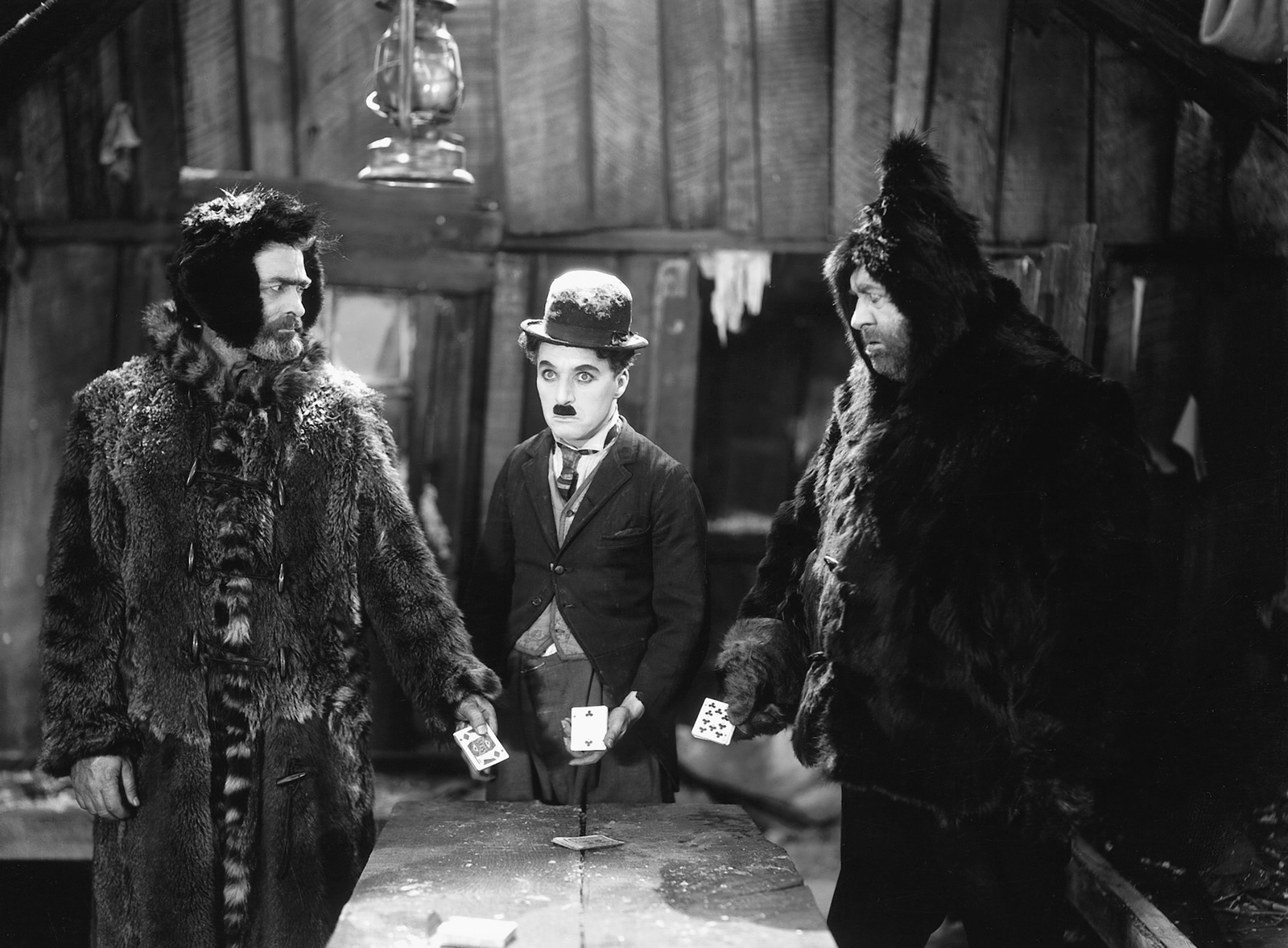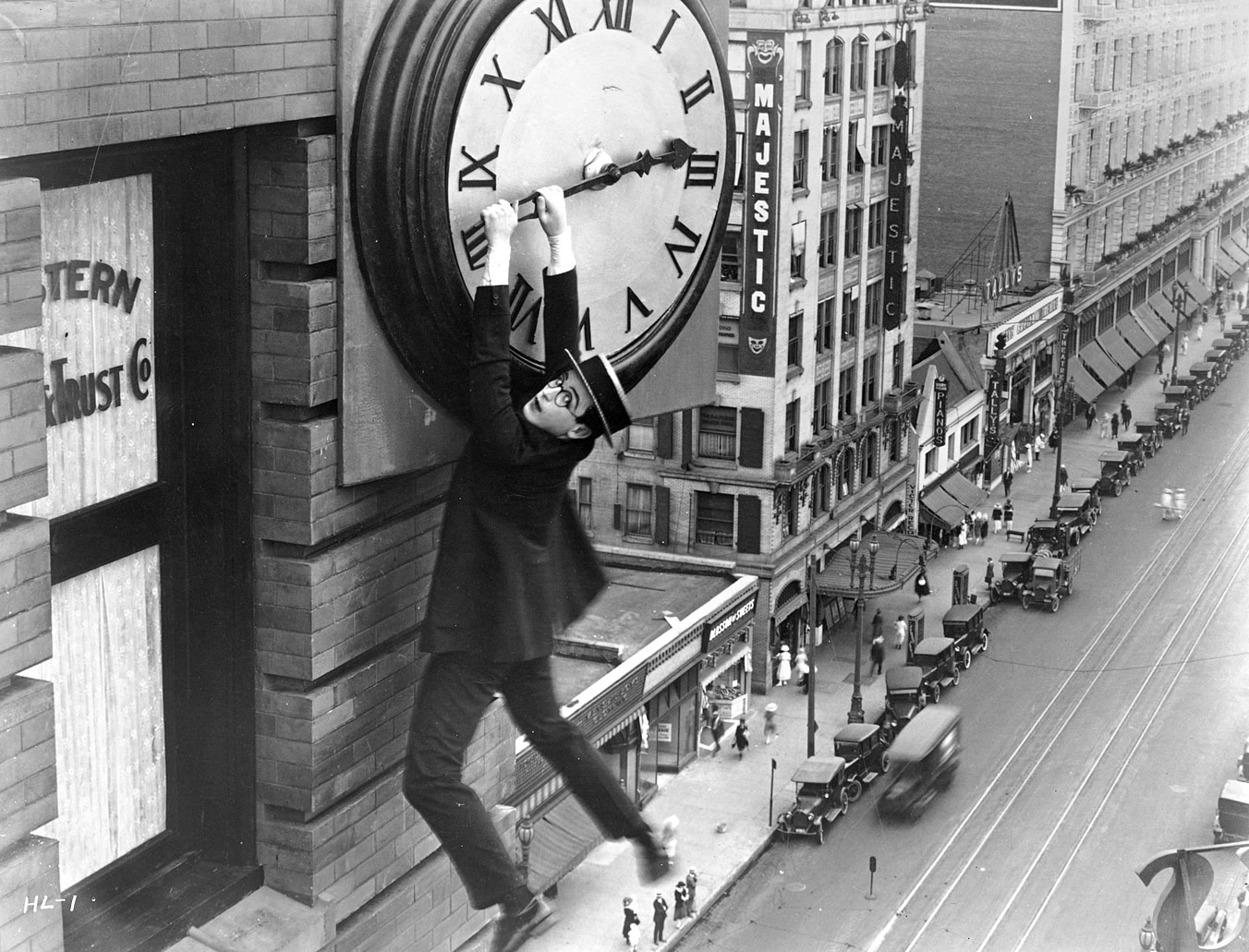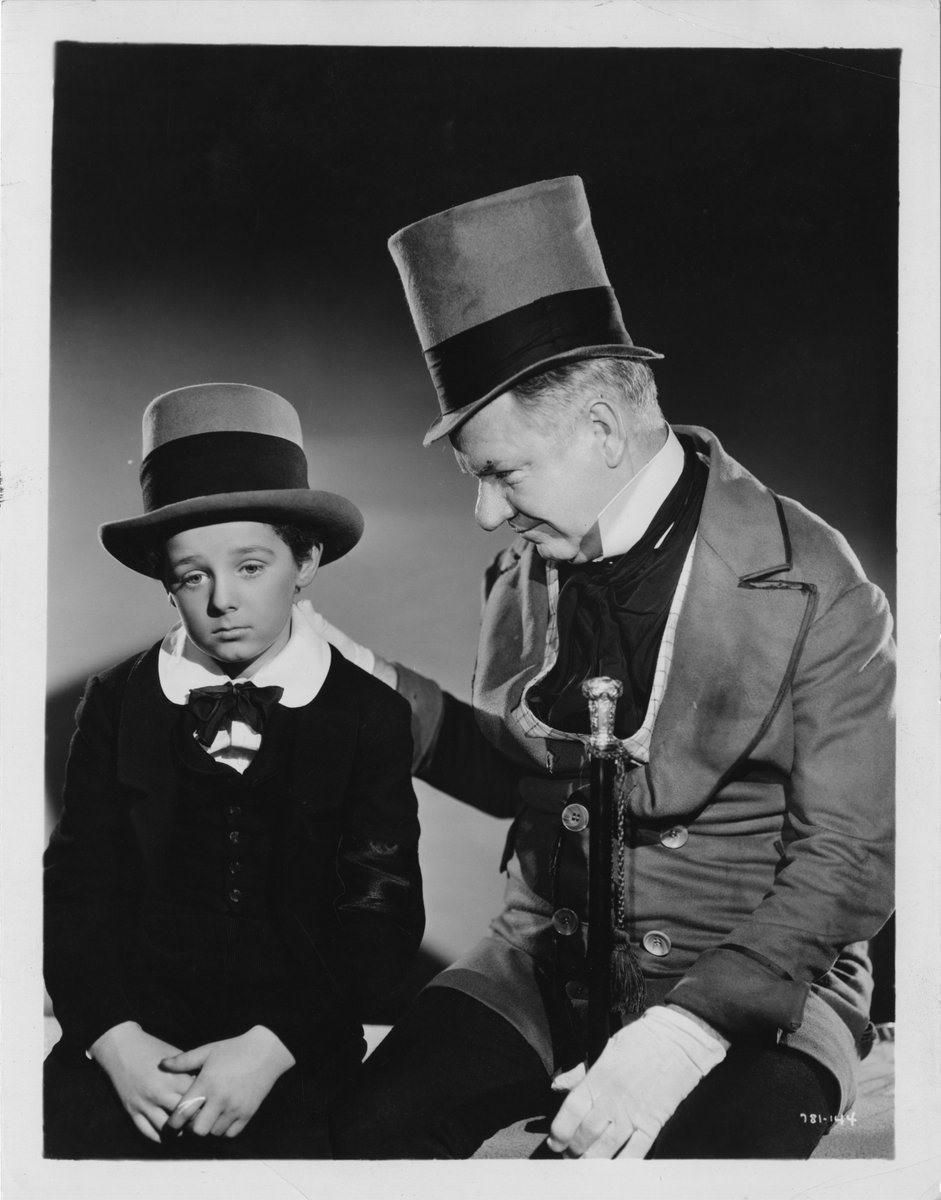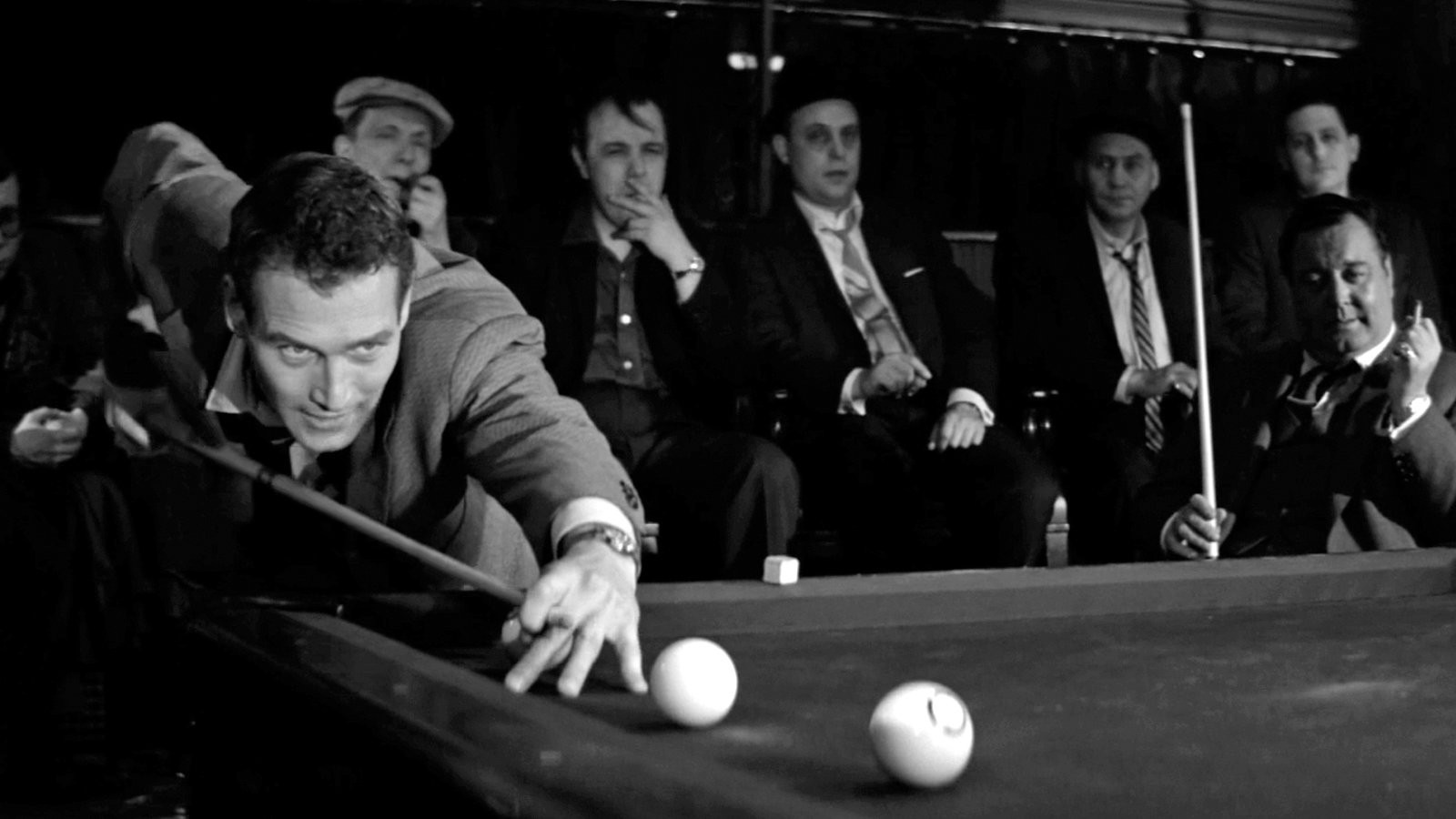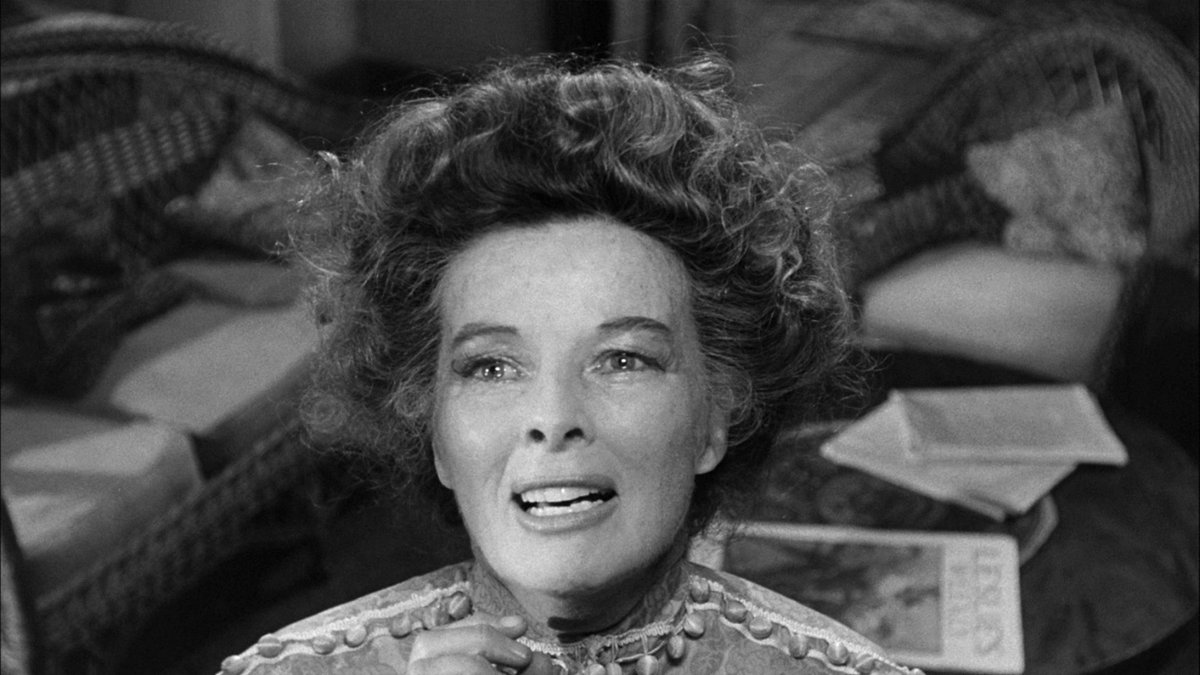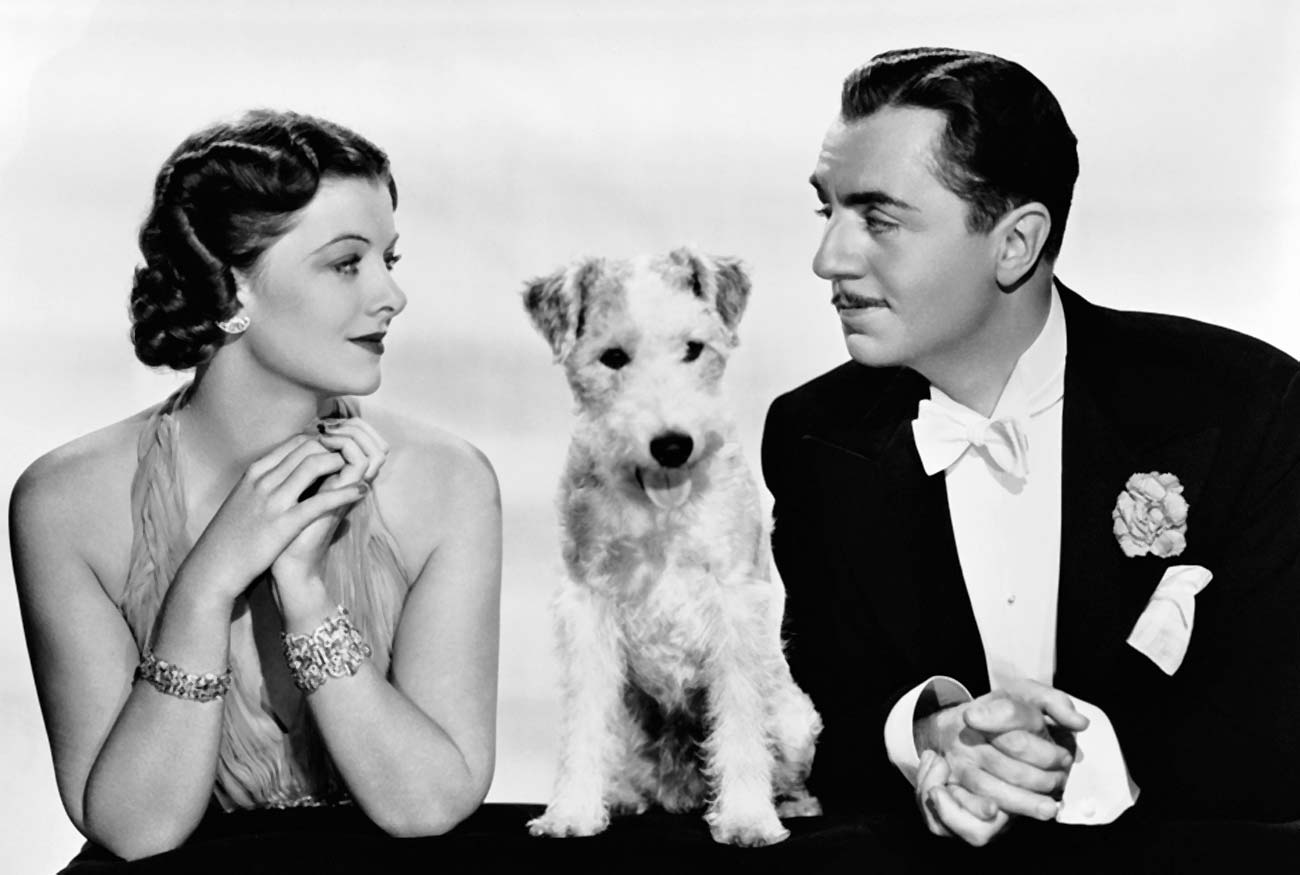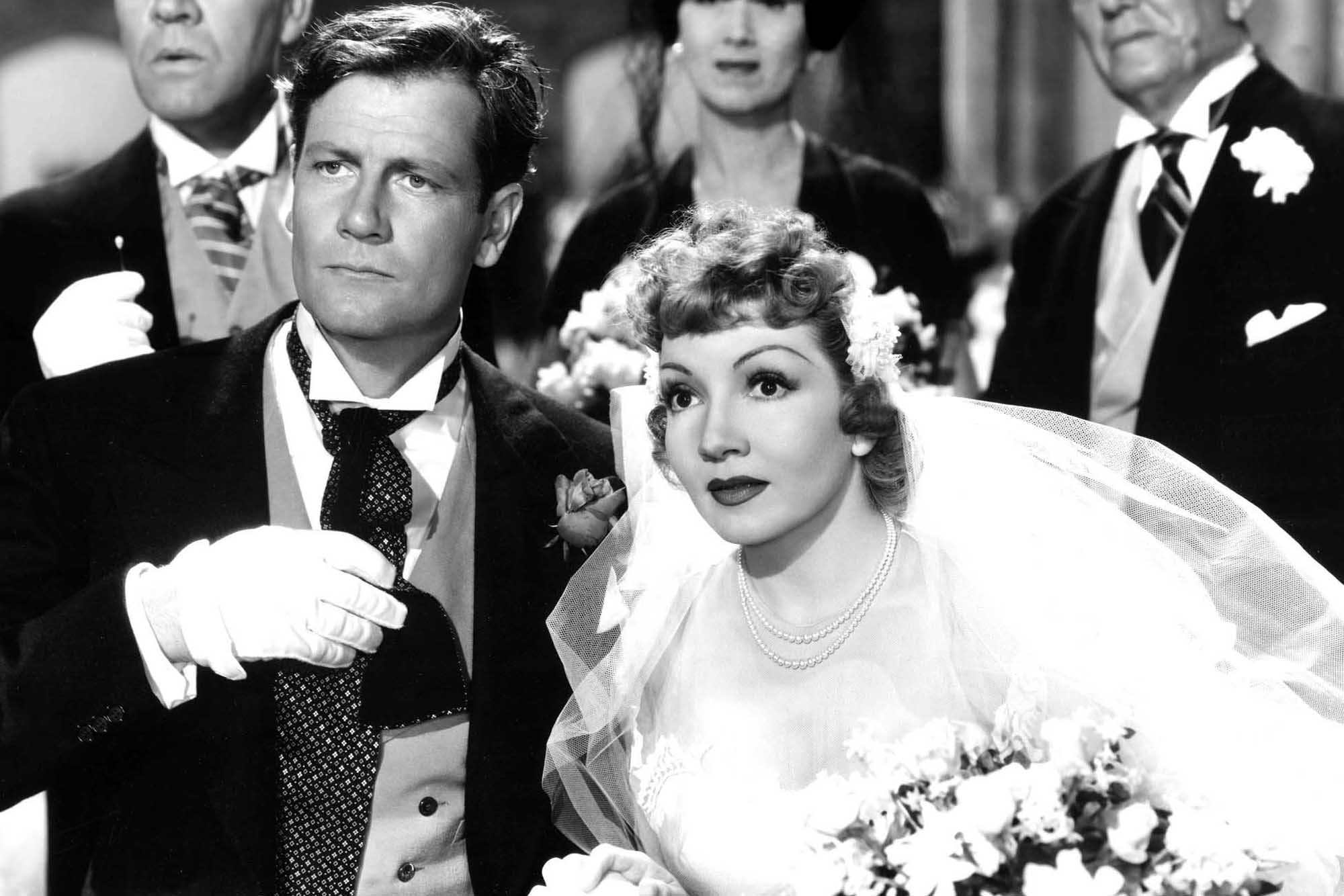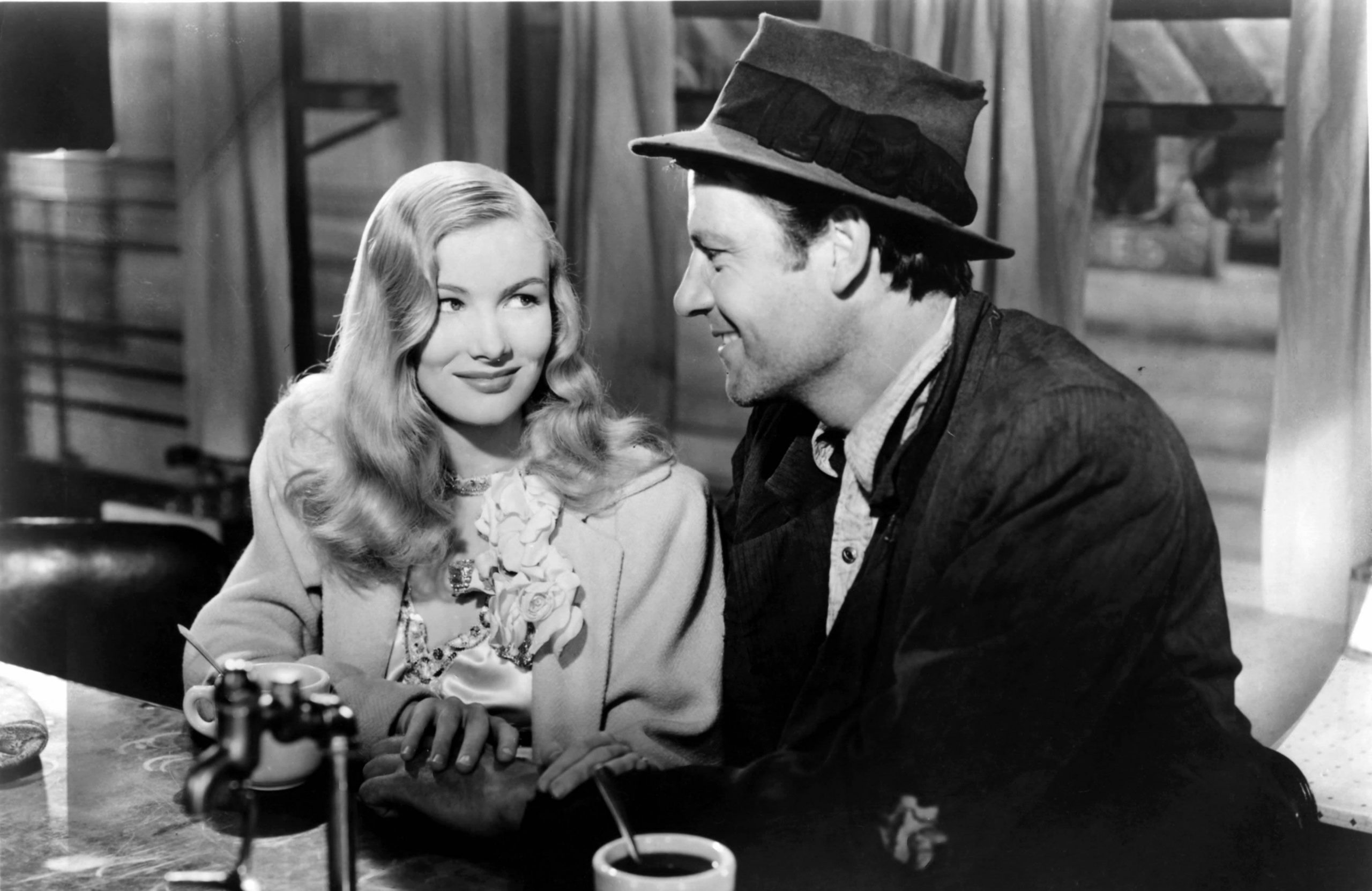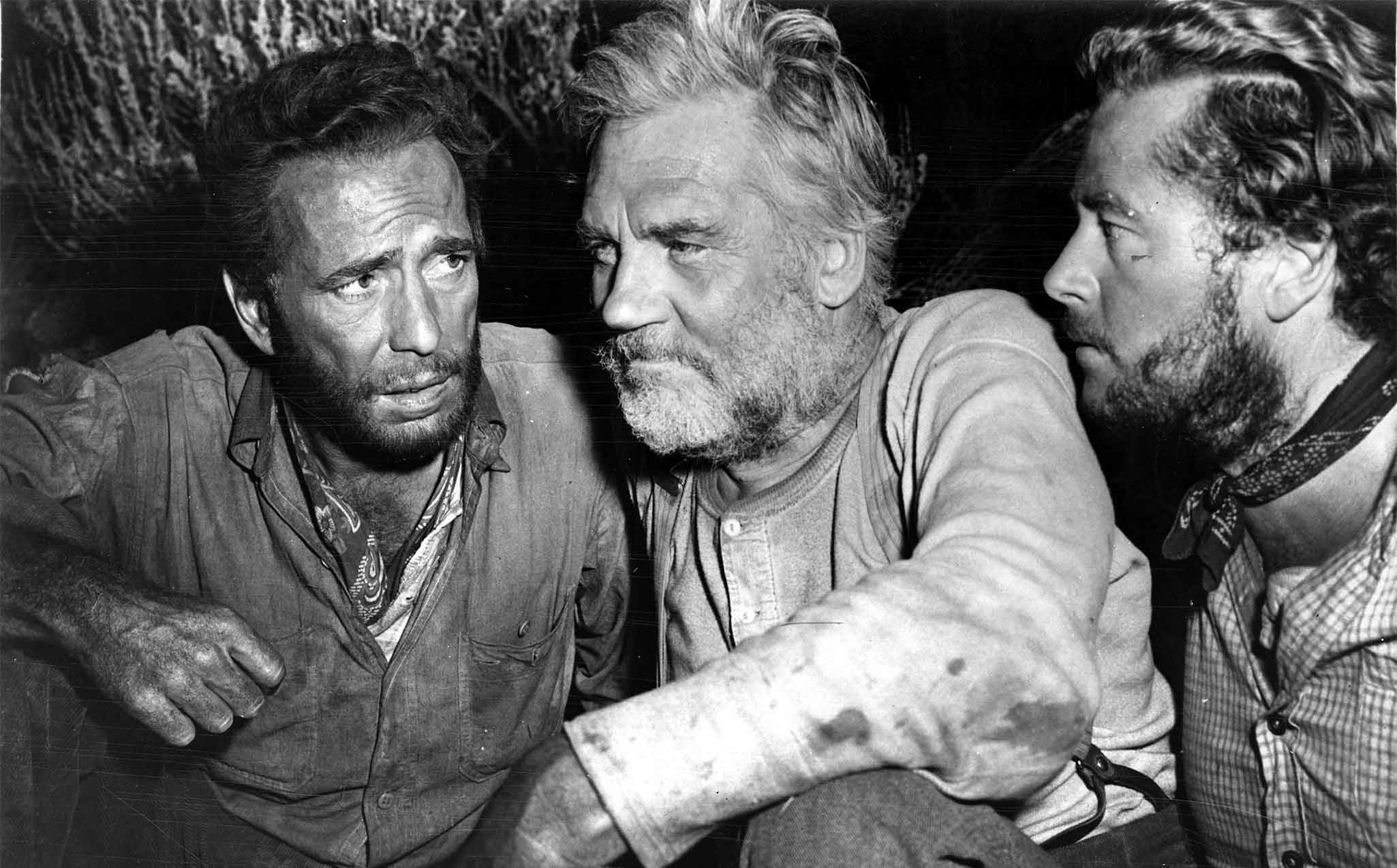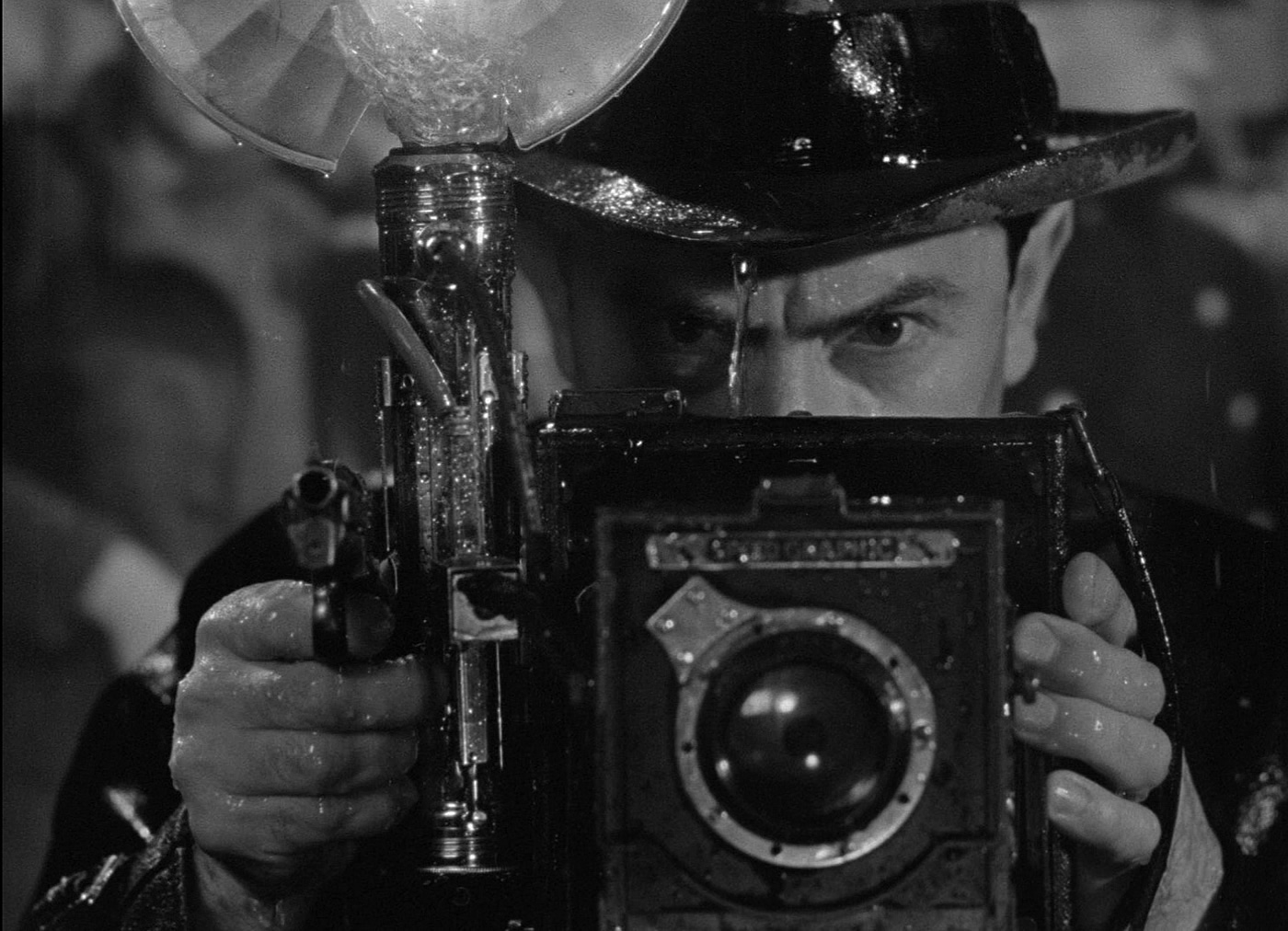For many years, I considered The Gold Rush (1925) to be my favorite Chaplin film. It has everything you would want in a great comedy: thrills (sliding off the edge of a cliff), romance (Georgia Hale is strikingly beautiful), imagination (a pretend dance using forks and potatoes), pathos (the tramp waiting for Georgia to attend his dinner), and intelligent humor (almost everywhere you look). These days I would choose City Lights (1931) as Chaplin’s best, but only because it’s more polished and consistent. I would still choose The Gold Rush as the best introduction to Chaplin — as long as the print quality is good, and it’s not the 1942 reissue version where Chaplin speaks all the titles and provides a running commentary. Unfortunately, the print quality is usually better with the 1942 reissue over the 1925 silent version.
Though fiercely original, Chaplin could still be influenced by other filmmakers. In his book Charlie Chaplin, author Theodore Huff describes how Chaplin may have absorbed ideas from other films:
The close to hysterical suspense of the scene of the cabin half over the cliff may show the influence of Harold Lloyd who started a vogue for comedy-thrill sequences in his “Safety Last” and other skyscraper pictures. It is Chaplin’s first use of such effects but, imitated or not, his inimitable touches make it his own. The happy ending of the film, which in some ways breaks the mood, may have been inspired by the epilogue of Murnau’s “The Last Laugh,” which was then influencing picture-making all over the world.
Chaplin considered The Gold Rush to be “the picture I want to be remembered by.” Huff estimated its production costs to be in the neighborhood of $650,000 (compared with $300,000 for The Kid). It was money well spent. The Gold Rush was one of the highest grossing films of the 1920s, bringing in $2.5 million domestically and another $2.5 million internationally. Chaplin received about $2 million, which was an extraordinary amount of money at the time.
Based on the listed running time (89 minutes), it appears that TCM has scheduled the 1925 version this time around. The Blu-ray and DVD packages from Criterion include both versions, which gives you a chance to experience the film from two different perspectives.
The Gold Rush
(1925; directed by Charles Chaplin)
The Criterion Collection (Blu-ray and DVD)
Wednesday, October 25 at 8:00 a.m. eastern on Turner Classic Movies
